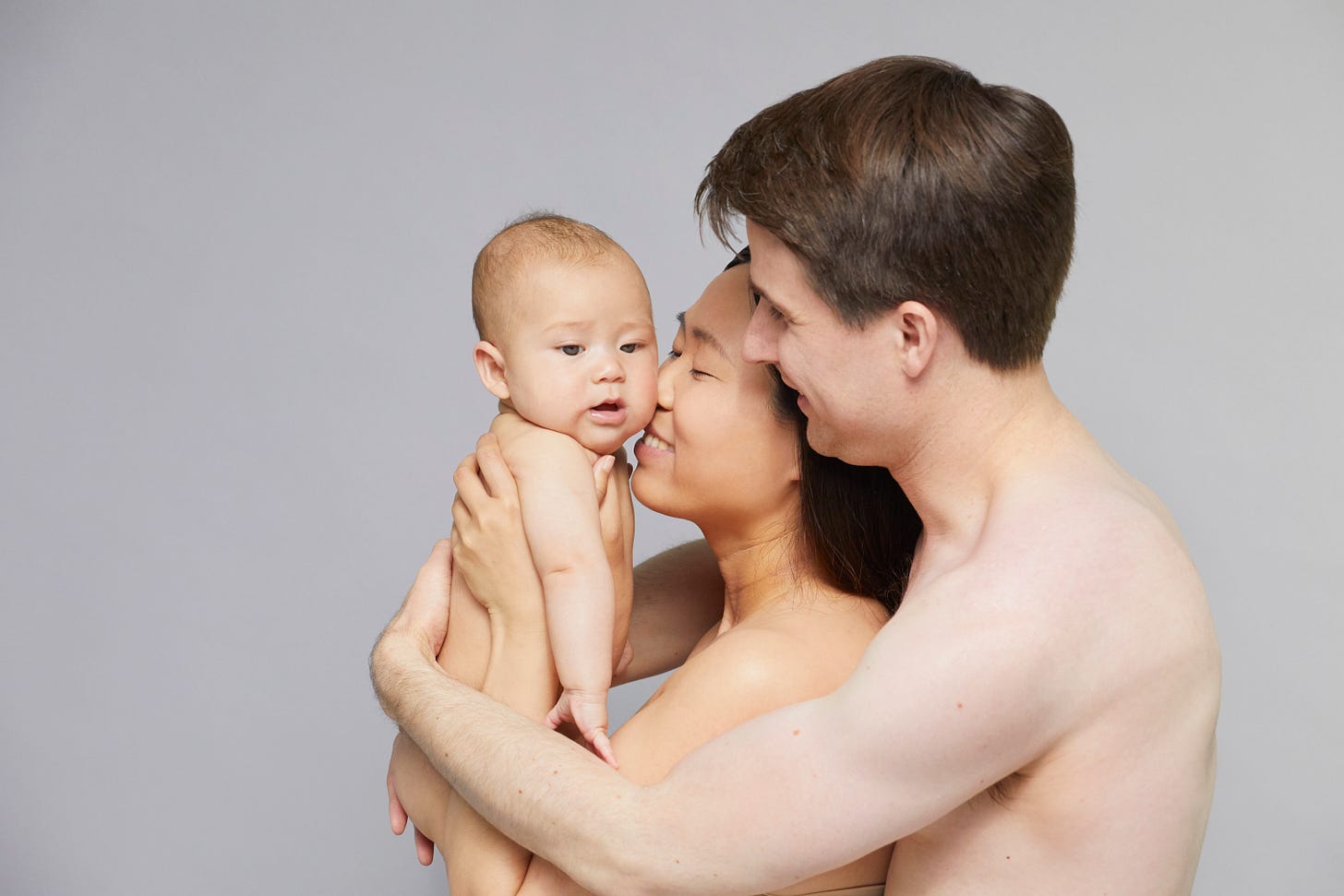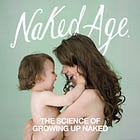Does nudity harm children?
What nearly a century of scientific inquiry reveals about children, parents, and the myth of harm
For generations, parents have been warned that letting their kids see them naked could have lasting psychological effects. The advice shows up everywhere—from parenting columns to daytime talk shows—usually framed as simple common sense. But where did this idea come from, and what does science actually say about it? In this article, we trace nearly a century of studies that have tried to answer that question, from early psychoanalysts and moral reformers to modern psychologists still testing the same uneasy assumption.
Sandor Lorand (1933)
The earliest academic voice is psychoanalyst Sandor Lorand. In The Psychology of Nudism, published in 1933, when nudism was still a very new movement in America and very little about it was known. Lorand offered a clinical perspective based on a day in a nudist park rather than any hard data, but ultimately his published report found no specific evidence of harm attributable to nudism itself.1
Martha Oleinick et al. (1966)
The 1960s is when we start to see actual data. Martha S. Oleinick and colleagues compared psychiatric outpatient children with controls and examined early socialization variables, including whether children saw parents nude. If parental nudity were a hidden driver of pathology, you’d expect differences between groups; they didn’t find them.2
William Hartman, Marilyn Fithian & Donald Johnson (1971)
Researchers then began looking at nudist communities directly. Hartman, Fithian, and Johnson’s survey and fieldwork—published as The Nudist Society—documented a remarkably ordinary community life organized around trust and responsibility, not the chaos imagined by moral panic.3
Marilyn Story (1980s–1990s)
In the 1980s and 1990s, Marilyn D. Story provided the most sustained program of peer-reviewed work. In a controlled comparison, Story reported that social nudists scored higher on body self-concept than non-nudists.4 She also reflected on the practical and professional tensions of doing research on social nudism.5 Together, her work consistently points away from harm and toward healthier body attitudes.
Dennis Craig Smith & William Sparks (1986)
Practitioner-research also mattered. Dennis Craig Smith and psychologist William Sparks collected questionnaires from people raised in nudist families and published them in The Naked Child (1982), later expanded as Growing Up Without Shame (1986). It wasn’t peer-reviewed lab work, but it was systematic: respondents overwhelmingly reported no harm and often described benefits like comfort with their bodies and lower shame.6
Robin Lewis & Louis Janda (1988)
Two late-1980s and 1990s studies address outcomes most directly. Lewis and Janda asked college students about childhood experiences of seeing parents nude and parental sexual attitudes. Exposure was not associated with poorer adult sexual adjustment; some indices leaned positive.7
Paul Okami et al. (1995-1998)
A few years later, psychologist Paul Okami examined the question head-on in a 1995 review article comparing clinical assumptions with available data. He found no empirical basis for the common belief that parental nudity harms children.8 That same year he detailed the methods for a larger longitudinal project that would become the most rigorous study to date.
Three years later, Okami and colleagues published that 18-year longitudinal follow-up of 200 children from the UCLA Family Lifestyles Project. At ages 17–18, those exposed to parental nudity earlier in life showed no detrimental outcomes across self-acceptance, relationships, behavior, substance use, sexual relationships, and related measures.9
Keon West (2018 – 2023)
More recently, Keon West’s multi-study research—mainly in adults but extending into child-related samples in 2023—links naturist participation with improved body image, self-esteem, and life satisfaction; his pre-registered 2023 study, titled, “Think of the children!” Childhood naturism, recollections and current wellbeing found no adverse outcomes for children involved in naturist contexts.10
Conclusions
So—does nudity harm children? Based on the best available evidence, ordinary, non-sexual family nudity does not harm children, and some studies suggest downstream benefits for body attitudes. Caveats apply: samples are often small and culturally narrow; ethical and career pressures make child-focused research on nudity hard to fund or publish. And context always matters—researchers distinguish between everyday, non-sexual nudity and sexualized exposure; the former is what these studies address.
Strip away the stigma and ask for data, and you get a simple answer. Letting a toddler see a parent step from the shower, changing at the beach, or raising kids in a naturist home isn’t, by itself, a risk factor. The harm case has been asserted far more often than it’s been demonstrated. What evidence we do have—spanning 1933 commentary, 1960s case-control data, 1970s community surveys, 1980s–1990s comparisons, and a 1998 gold-standard longitudinal study—points to no harm and, in some respects, to healthier outcomes. 🪐
More to explore:
Lorand, S. (1933). The psychology of nudism. Psychoanalytic Review, 20, 197–207.
Oleinick, M. S., Bahn, A. K., Eisenberg, L., & Lilienfeld, A. M. (1966). Early socialization experiences and intrafamilial environment: A study of psychiatric outpatient and control group children. Archives of General Psychiatry, 15(4), 344–353. https://doi.org/10.1001/archpsyc.1966.01730160008003
Hartman, W. E., Fithian, M., & Johnson, D. (1971). The Nudist Society. New York, NY: Crown.
Story, M. (1984). Comparisons of body self-concept between social nudists and nonnudists. The Journal of Psychology, 118(1), 99–112. https://doi.org/10.1080/00223980.1984.9712599
Story, M. D. (1993). Personal and professional perspectives on social nudism: Should you be personally involved in your research? The Journal of Sex Research, 30(2), 111–114. https://doi.org/10.1080/00224499309551689
Smith, D. C., & Sparks, W. (1986). Growing Up Without Shame (Rev. ed.). Elysium Growth Press. (Originally published as The Naked Child, 1982.)
Lewis, R. J., & Janda, L. H. (1988). The relationship between adult sexual adjustment and childhood experiences regarding exposure to nudity, sleeping in the parental bed, and parental attitudes toward sexuality. Journal of Sex Education and Therapy, 14(1), 17–25. https://doi.org/10.1007/BF01541812
Okami, P. (1995). Clinical assumptions versus empirical data on childhood exposure to parental nudity. Journal of Sex Research, 32(1), 46-57. https://doi.org/10.1080/00224499509551774
Okami, P., Olmstead, R., Abramson, P. R., & Pendleton, L. (1998). Early childhood exposure to parental nudity and scenes of parental sexuality: An 18-year longitudinal study. Archives of Sexual Behavior, 27(4), 361–384. https://pubmed.ncbi.nlm.nih.gov/9681119/
West, K. (2018). Investigations and applications of the effects of naturist activities on body image, self-esteem, and life satisfaction. Journal of Happiness Studies, 19(3), 677–697. https://doi.org/10.1007/s10902-017-9846-1
West, K. (2023). “Think of the children!” Childhood naturism, recollections and current wellbeing. Child & Society. Advance online publication. https://doi.org/10.1111/chso.12743








I grew up in this way and no harm ever done to me.
No it Doesn't and I grew up Around these People. They all were so helpful and confident about their bodies.